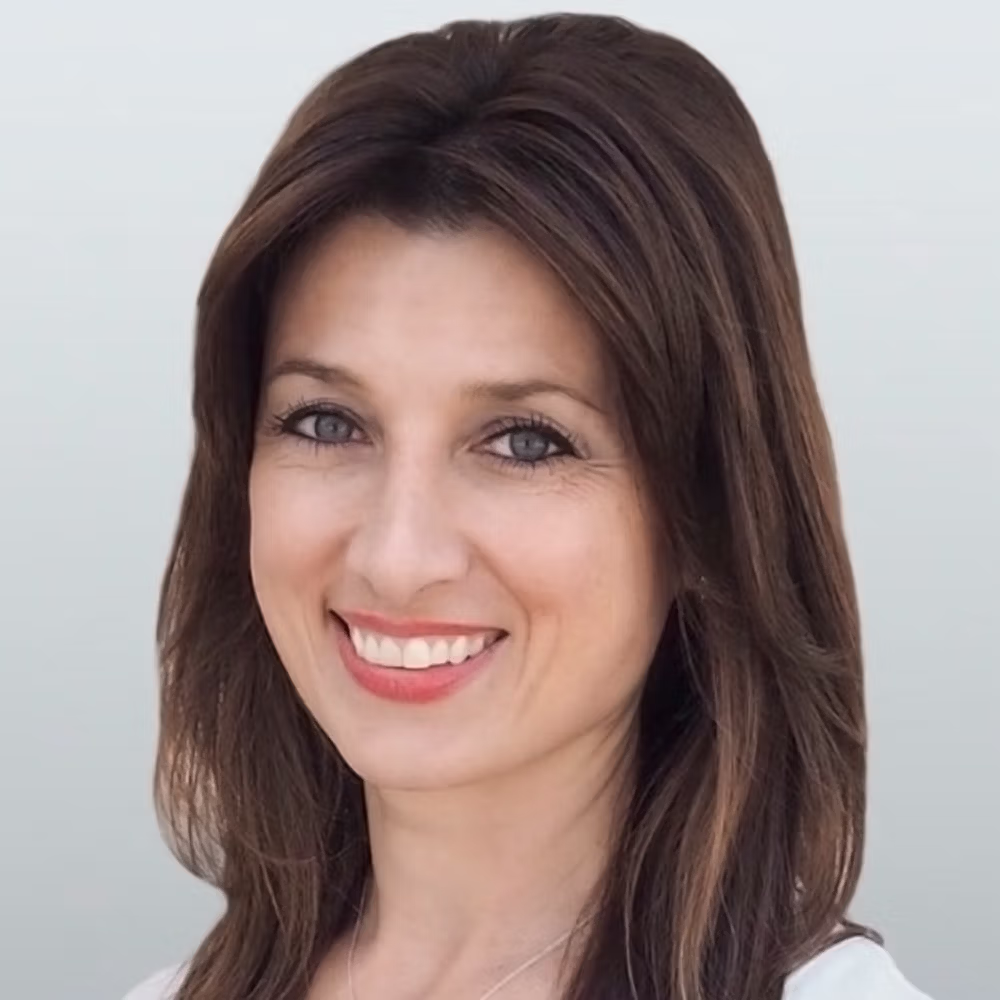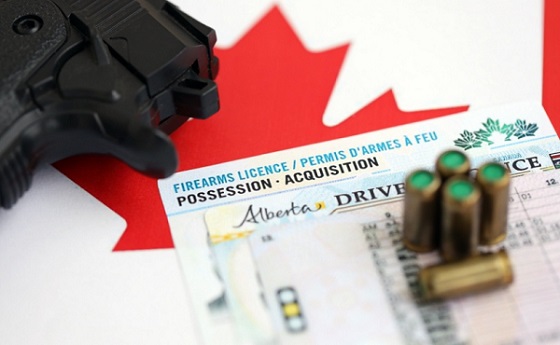Brownstone Institute
Anthony Fauci’s Very Bad Week
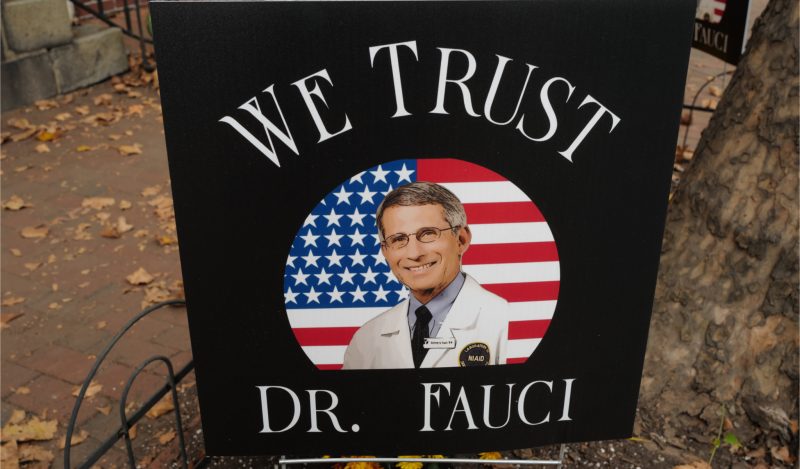
From the Brownstone Institute
BY
It’s not been Anthony Fauci’s best week.
Forever intent on managing his image and public opinion on the pandemic response, he accepted a seemingly safe interview on CNN. The reporter was someone he trusted, Michael Smerconish, who tossed in what he believed to be a softball question.
He asked Fauci about the Cochrane study on masks by Tom Jefferson, and, in particular the author’s comments to Brownstone fellow Maryanne Demasi. Jefferson flat out said that masks don’t work to control viruses. Smerconish simply wanted Fauci’s response.
Fauci, who might have been expected to perform better, stumbled very badly. He said that while on a population level mask evidence is weak, the evidence is stronger on an individual level. That of course is a bit of a head-scratcher, especially since he cited none of the supposed studies.
Actually, it makes no sense at all. The whole point of the Jefferson paper was to examine the best-possible evidence. The results were exactly the “science” that Fauci has touted for years. The big difference is that the results completely contradict Fauci himself. Is this guy a pathological liar?
You can watch the snippet:
CNN's @smerconish confronts Dr. Fauci with the latest evidence that masks, even N95s, made "no difference" in the pandemic. Fauci responds by basically conceding that point while adding the nonsensical claim that masks work on an "individual basis," or something.
Smerconish ends… pic.twitter.com/tZB62saxOL
— Scott Morefield (@SKMorefield) September 3, 2023
After the exchange, Smerconish reported that he texted Fauci an apology for the way the interview went, assuring him that it was not intended as a “gotcha” interview. He reported that Fauci texted him back but didn’t want to share the contents because he didn’t have permission. Interesting. I’m pretty sure that a reporter under normal circumstances would certainly share that information. But as we know, Fauci is in a league of his own.
In addition, some very interesting email correspondence came out, thanks to a FOIA request by US Right to Know. The communication to Fauci was courtesy of Fauci’s chief of staff Greg Folkers and on behalf of Fauci’s frequent co-author David Morens. The date was January 27, 2020, about the time that China’s experience with SARS-CoV-2 was making the news all over the US. (I wrote my first article against lockdowns for Covid the next day.)
“EcoHealth group (Peter Daszak et al), has for years been among the biggest players in coronavirus work, also in collaboration with Ralph Baric, Ian Lipkin and others,” wrote Folkers. In the past 5 years, and working with the Wuhan Institute of Virology, they had discovered hundreds of coronaviruses circulating in China. Further, the memo said, “clinical signs of bat SARS-CoVs in mice were not prevented with a vaccine candidate against SARS-CoV, and were not treatable with most monoclonal therapies being developed.”
Here is the full memo:
 The timing here checks out against Jeremy Farrar’s own memoir:
The timing here checks out against Jeremy Farrar’s own memoir:
“By the second week of January, I was beginning to realise the scale of what was happening. I was also getting the uncomfortable feeling that some of the information needed by scientists all around the world to detect and fight this new disease was not being disclosed as fast as it could be. I did not know it then, but a fraught few weeks lay ahead. In those weeks, I became exhausted and scared. I felt as if I was living a different person’s life. During that period, I would do things I had never done before: acquire a burner phone, hold clandestine meetings, keep difficult secrets. I would have surreal conversations with my wife, Christiane, who persuaded me we should let the people closest to us know what was going on. I phoned my brother and best friend to give them my temporary number. In hushed conversations, I sketched out the possibility of a looming global health crisis that had the potential to be read as bioterrorism. ‘If anything happens to me in the next few weeks,’ I told them nervously, ‘this is what you need to know.’”
Wow, these guys believed they would be off’d! That’s some crazy stuff there.
These weeks were the critical turning point. China had already locked down. Farrar reports that “the world had all the information it needed by 24 January: a potentially fatal novel respiratory disease that could spread between people without symptoms, with no vaccines or treatments, that had already ravaged a huge, highly connected Chinese city.”
Then the possibility of a lab leak became very obvious in these days. “In the last week of January 2020,” he writes, “I saw email chatter from scientists in the US suggesting the virus looked almost engineered to infect human cells. These were credible scientists proposing an incredible, and terrifying, possibility of either an accidental leak from a laboratory or a deliberate release.”
This fits exactly with the above memo to Fauci. It was at this point that the cool-and-collected Fauci organized the authors of what became the “Proximal Origin” paper that denied it was a lab leak, the first draft of which was circulated on February 4. Among the authors was a virologist who had worked with EcoHealth.
You can look through the entire timeline and see that this all checks out. It seems ever clearer what was going on here. Fauci and his cohorts were alerted to NIH funding of the Wuhan lab. They became convinced of the very strong likelihood that this was a lab leak, accidental or deliberate. This began to make some sense of other reports from many months earlier of sick soldiers returning from the Military World Games. They panicked and they worked on a cover-up.
Why did they panic? Was it for fear of the public health consequences of a rapidly spreading virus? More likely, they panicked that they would rightly be blamed for it because the lab was funded through a third party by US taxpayers. They must also have known that they were doing gain-of-function research: the idea that labs create viruses and then also manufacture the antidote in the form of a vaccine. But according to the report on Fauci’s desk, no vaccine works for this one or others in this class of virus.
Fauci defaulted to the only action he could think of at the time: use lockdowns to minimize the spread. His staff had already taken a junket to Wuhan and returned with a report dated February 24, 2020 that said that lockdowns worked to suppress viral spread.
Lacking any better ideas, Fauci decided to push lockdowns as a way of minimizing the damage and keeping his reputation out of harm’s way by 1) denying the lab leak with a seemingly credible paper, and 2) causing a hugely distracting amount of chaos with a lockdown that they convinced Donald Trump himself to back.
This would of course wreck the Trump presidency, which was a bonus from the point of view of the military intelligence that was already working to implement protocols from their recently concluded “germ games.”
Next in line came the necessity to involve the New York Times, which on February 28 ran an article calling for the US to “go medieval” on the virus in addition to an article by Peter Dazsak himself on the op-ed page!
Four days later, Fauci told Michael Gerson of the Washington Post on March 2, 2020, that no vaccine would be needed to get over the pandemic. “Social distancing is not really geared to wait for a vaccine,” wrote Fauci. “The epidemic will gradually decline and stop on its own without a vaccine.”
Why would he say this? Again, Fauci had been told that no vaccine in China seemed to work. Plus, he is not a stupid man – coronaviruses mutate too quickly – and had years of attempts to vaccinate against AIDS without success. So his thinking was that using force to stop the spread was the only real option for a man who was seeking to “cover his ass,” as the expression goes.
The big problem with the plan, of course, was that there was no exit strategy. As soon as you open up, the virus is going to spread anyway. This was why Fauci welcomed all attempts at creating a vaccine anyway. At least the vaccine would provide an excuse to end the lockdowns.
But just in case it did not, he worked with his co-author David Morens on a big think piece that came out in Cell in August 2020. This was the paper that said lockdowns should really be permanent.
“Living in greater harmony with nature,” they wrote, “will require changes in human behavior as well as other radical changes that may take decades to achieve: rebuilding the infrastructures of human existence, from cities to homes to workplaces, to water and sewer systems, to recreational and gatherings venues.”
Despite Fauci’s wishes, the most extreme aspects of lockdowns gradually faded away in time, most anointed experts can pretend as if the vaccine ended the worst aspects of the pandemic (that’s why the mandates became necessary, if only to maximize uptake and confound the science), and Fauci keeps going on national television, despite his age and wealth, to dial back his responsibility for any aspect of it, including the lockdowns he is on record backing from February 26, 2020, onward.
In any case, this is a summary of current knowledge. There are of course many other layers to this onion, including the early involvement of the pharmaceutical companies and the extensive intervention by the Department of Defense. Sadly, much of the necessary information to sort through that thicket is wholly classified.
Thus ends Fauci’s not-so-good week. We’ll get to the bottom of this eventually.
Author
Brownstone Institute
The Unmasking of Vaccine Science

From the Brownstone Institute
By
I recently purchased Aaron Siri’s new book Vaccines, Amen. As I flipped though the pages, I noticed a section devoted to his now-famous deposition of Dr Stanley Plotkin, the “godfather” of vaccines.
I’d seen viral clips circulating on social media, but I had never taken the time to read the full transcript — until now.
Siri’s interrogation was methodical and unflinching…a masterclass in extracting uncomfortable truths.
A Legal Showdown
In January 2018, Dr Stanley Plotkin, a towering figure in immunology and co-developer of the rubella vaccine, was deposed under oath in Pennsylvania by attorney Aaron Siri.
The case stemmed from a custody dispute in Michigan, where divorced parents disagreed over whether their daughter should be vaccinated. Plotkin had agreed to testify in support of vaccination on behalf of the father.
What followed over the next nine hours, captured in a 400-page transcript, was extraordinary.
Plotkin’s testimony revealed ethical blind spots, scientific hubris, and a troubling indifference to vaccine safety data.
He mocked religious objectors, defended experiments on mentally disabled children, and dismissed glaring weaknesses in vaccine surveillance systems.
A System Built on Conflicts
From the outset, Plotkin admitted to a web of industry entanglements.
He confirmed receiving payments from Merck, Sanofi, GSK, Pfizer, and several biotech firms. These were not occasional consultancies but long-standing financial relationships with the very manufacturers of the vaccines he promoted.
Plotkin appeared taken aback when Siri questioned his financial windfall from royalties on products like RotaTeq, and expressed surprise at the “tone” of the deposition.
Siri pressed on: “You didn’t anticipate that your financial dealings with those companies would be relevant?”
Plotkin replied: “I guess, no, I did not perceive that that was relevant to my opinion as to whether a child should receive vaccines.”
The man entrusted with shaping national vaccine policy had a direct financial stake in its expansion, yet he brushed it aside as irrelevant.
Contempt for Religious Dissent
Siri questioned Plotkin on his past statements, including one in which he described vaccine critics as “religious zealots who believe that the will of God includes death and disease.”
Siri asked whether he stood by that statement. Plotkin replied emphatically, “I absolutely do.”
Plotkin was not interested in ethical pluralism or accommodating divergent moral frameworks. For him, public health was a war, and religious objectors were the enemy.
He also admitted to using human foetal cells in vaccine production — specifically WI-38, a cell line derived from an aborted foetus at three months’ gestation.
Siri asked if Plotkin had authored papers involving dozens of abortions for tissue collection. Plotkin shrugged: “I don’t remember the exact number…but quite a few.”
Plotkin regarded this as a scientific necessity, though for many people — including Catholics and Orthodox Jews — it remains a profound moral concern.
Rather than acknowledging such sensitivities, Plotkin dismissed them outright, rejecting the idea that faith-based values should influence public health policy.
That kind of absolutism, where scientific aims override moral boundaries, has since drawn criticism from ethicists and public health leaders alike.
As NIH director Jay Bhattacharya later observed during his 2025 Senate confirmation hearing, such absolutism erodes trust.
“In public health, we need to make sure the products of science are ethically acceptable to everybody,” he said. “Having alternatives that are not ethically conflicted with foetal cell lines is not just an ethical issue — it’s a public health issue.”
Safety Assumed, Not Proven
When the discussion turned to safety, Siri asked, “Are you aware of any study that compares vaccinated children to completely unvaccinated children?”
Plotkin replied that he was “not aware of well-controlled studies.”
Asked why no placebo-controlled trials had been conducted on routine childhood vaccines such as hepatitis B, Plotkin said such trials would be “ethically difficult.”
That rationale, Siri noted, creates a scientific blind spot. If trials are deemed too unethical to conduct, then gold-standard safety data — the kind required for other pharmaceuticals — simply do not exist for the full childhood vaccine schedule.
Siri pointed to one example: Merck’s hepatitis B vaccine, administered to newborns. The company had only monitored participants for adverse events for five days after injection.
Plotkin didn’t dispute it. “Five days is certainly short for follow-up,” he admitted, but claimed that “most serious events” would occur within that time frame.
Siri challenged the idea that such a narrow window could capture meaningful safety data — especially when autoimmune or neurodevelopmental effects could take weeks or months to emerge.
Siri pushed on. He asked Plotkin if the DTaP and Tdap vaccines — for diphtheria, tetanus and pertussis — could cause autism.
“I feel confident they do not,” Plotkin replied.
But when shown the Institute of Medicine’s 2011 report, which found the evidence “inadequate to accept or reject” a causal link between DTaP and autism, Plotkin countered, “Yes, but the point is that there were no studies showing that it does cause autism.”
In that moment, Plotkin embraced a fallacy: treating the absence of evidence as evidence of absence.
“You’re making assumptions, Dr Plotkin,” Siri challenged. “It would be a bit premature to make the unequivocal, sweeping statement that vaccines do not cause autism, correct?”
Plotkin relented. “As a scientist, I would say that I do not have evidence one way or the other.”
The MMR
The deposition also exposed the fragile foundations of the measles, mumps, and rubella (MMR) vaccine.
When Siri asked for evidence of randomised, placebo-controlled trials conducted before MMR’s licensing, Plotkin pushed back: “To say that it hasn’t been tested is absolute nonsense,” he said, claiming it had been studied “extensively.”
Pressed to cite a specific trial, Plotkin couldn’t name one. Instead, he gestured to his own 1,800-page textbook: “You can find them in this book, if you wish.”
Siri replied that he wanted an actual peer-reviewed study, not a reference to Plotkin’s own book. “So you’re not willing to provide them?” he asked. “You want us to just take your word for it?”
Plotkin became visibly frustrated.
Eventually, he conceded there wasn’t a single randomised, placebo-controlled trial. “I don’t remember there being a control group for the studies, I’m recalling,” he said.
The exchange foreshadowed a broader shift in public discourse, highlighting long-standing concerns that some combination vaccines were effectively grandfathered into the schedule without adequate safety testing.
In September this year, President Trump called for the MMR vaccine to be broken up into three separate injections.
The proposal echoed a view that Andrew Wakefield had voiced decades earlier — namely, that combining all three viruses into a single shot might pose greater risk than spacing them out.
Wakefield was vilified and struck from the medical register. But now, that same question — once branded as dangerous misinformation — is set to be re-examined by the CDC’s new vaccine advisory committee, chaired by Martin Kulldorff.
The Aluminium Adjuvant Blind Spot
Siri next turned to aluminium adjuvants — the immune-activating agents used in many childhood vaccines.
When asked whether studies had compared animals injected with aluminium to those given saline, Plotkin conceded that research on their safety was limited.
Siri pressed further, asking if aluminium injected into the body could travel to the brain. Plotkin replied, “I have not seen such studies, no, or not read such studies.”
When presented with a series of papers showing that aluminium can migrate to the brain, Plotkin admitted he had not studied the issue himself, acknowledging that there were experiments “suggesting that that is possible.”
Asked whether aluminium might disrupt neurological development in children, Plotkin stated, “I’m not aware that there is evidence that aluminum disrupts the developmental processes in susceptible children.”
Taken together, these exchanges revealed a striking gap in the evidence base.
Compounds such as aluminium hydroxide and aluminium phosphate have been injected into babies for decades, yet no rigorous studies have ever evaluated their neurotoxicity against an inert placebo.
This issue returned to the spotlight in September 2025, when President Trump pledged to remove aluminium from vaccines, and world-leading researcher Dr Christopher Exley renewed calls for its complete reassessment.
A Broken Safety Net
Siri then turned to the reliability of the Vaccine Adverse Event Reporting System (VAERS) — the primary mechanism for collecting reports of vaccine-related injuries in the United States.
Did Plotkin believe most adverse events were captured in this database?
“I think…probably most are reported,” he replied.
But Siri showed him a government-commissioned study by Harvard Pilgrim, which found that fewer than 1% of vaccine adverse events are reported to VAERS.
“Yes,” Plotkin said, backtracking. “I don’t really put much faith into the VAERS system…”
Yet this is the same database officials routinely cite to claim that “vaccines are safe.”
Ironically, Plotkin himself recently co-authored a provocative editorial in the New England Journal of Medicine, conceding that vaccine safety monitoring remains grossly “inadequate.”
Experimenting on the Vulnerable
Perhaps the most chilling part of the deposition concerned Plotkin’s history of human experimentation.
“Have you ever used orphans to study an experimental vaccine?” Siri asked.
“Yes,” Plotkin replied.
“Have you ever used the mentally handicapped to study an experimental vaccine?” Siri asked.
“I don’t recollect…I wouldn’t deny that I may have done so,” Plotkin replied.
Siri cited a study conducted by Plotkin in which he had administered experimental rubella vaccines to institutionalised children who were “mentally retarded.”
Plotkin stated flippantly, “Okay well, in that case…that’s what I did.”
There was no apology, no sign of ethical reflection — just matter-of-fact acceptance.
Siri wasn’t done.
He asked if Plotkin had argued that it was better to test on those “who are human in form but not in social potential” rather than on healthy children.
Plotkin admitted to writing it.
Siri established that Plotkin had also conducted vaccine research on the babies of imprisoned mothers, and on colonised African populations.
Plotkin appeared to suggest that the scientific value of such studies outweighed the ethical lapses—an attitude that many would interpret as the classic ‘ends justify the means’ rationale.
But that logic fails the most basic test of informed consent. Siri asked whether consent had been obtained in these cases.
“I don’t remember…but I assume it was,” Plotkin said.
Assume?
This was post-Nuremberg research. And the leading vaccine developer in America couldn’t say for sure whether he had properly informed the people he experimented on.
In any other field of medicine, such lapses would be disqualifying.
A Casual Dismissal of Parental Rights
Plotkin’s indifference to experimenting on disabled children didn’t stop there.
Siri asked whether someone who declined a vaccine due to concerns about missing safety data should be labelled “anti-vax.”
Plotkin replied, “If they refused to be vaccinated themselves or refused to have their children vaccinated, I would call them an anti-vaccination person, yes.”
Plotkin was less concerned about adults making that choice for themselves, but he had no tolerance for parents making those choices for their own children.
“The situation for children is quite different,” said Plotkin, “because one is making a decision for somebody else and also making a decision that has important implications for public health.”
In Plotkin’s view, the state held greater authority than parents over a child’s medical decisions — even when the science was uncertain.
The Enabling of Figures Like Plotkin
The Plotkin deposition stands as a case study in how conflicts of interest, ideology, and deference to authority have corroded the scientific foundations of public health.
Plotkin is no fringe figure. He is celebrated, honoured, and revered. Yet he promotes vaccines that have never undergone true placebo-controlled testing, shrugs off the failures of post-market surveillance, and admits to experimenting on vulnerable populations.
This is not conjecture or conspiracy — it is sworn testimony from the man who helped build the modern vaccine program.
Now, as Health Secretary Robert F. Kennedy, Jr. reopens long-dismissed questions about aluminium adjuvants and the absence of long-term safety studies, Plotkin’s once-untouchable legacy is beginning to fray.
Republished from the author’s Substack
Brownstone Institute
Bizarre Decisions about Nicotine Pouches Lead to the Wrong Products on Shelves

From the Brownstone Institute
A walk through a dozen convenience stores in Montgomery County, Pennsylvania, says a lot about how US nicotine policy actually works. Only about one in eight nicotine-pouch products for sale is legal. The rest are unauthorized—but they’re not all the same. Some are brightly branded, with uncertain ingredients, not approved by any Western regulator, and clearly aimed at impulse buyers. Others—like Sweden’s NOAT—are the opposite: muted, well-made, adult-oriented, and already approved for sale in Europe.
Yet in the United States, NOAT has been told to stop selling. In September 2025, the Food and Drug Administration (FDA) issued the company a warning letter for offering nicotine pouches without marketing authorization. That might make sense if the products were dangerous, but they appear to be among the safest on the market: mild flavors, low nicotine levels, and recyclable paper packaging. In Europe, regulators consider them acceptable. In America, they’re banned. The decision looks, at best, strange—and possibly arbitrary.
What the Market Shows
My October 2025 audit was straightforward. I visited twelve stores and recorded every distinct pouch product visible for sale at the counter. If the item matched one of the twenty ZYN products that the FDA authorized in January, it was counted as legal. Everything else was counted as illegal.
Two of the stores told me they had recently received FDA letters and had already removed most illegal stock. The other ten stores were still dominated by unauthorized products—more than 93 percent of what was on display. Across all twelve locations, about 12 percent of products were legal ZYN, and about 88 percent were not.
The illegal share wasn’t uniform. Many of the unauthorized products were clearly high-nicotine imports with flashy names like Loop, Velo, and Zimo. These products may be fine, but some are probably high in contaminants, and a few often with very high nicotine levels. Others were subdued, plainly meant for adult users. NOAT was a good example of that second group: simple packaging, oat-based filler, restrained flavoring, and branding that makes no effort to look “cool.” It’s the kind of product any regulator serious about harm reduction would welcome.
Enforcement Works
To the FDA’s credit, enforcement does make a difference. The two stores that received official letters quickly pulled their illegal stock. That mirrors the agency’s broader efforts this year: new import alerts to detain unauthorized tobacco products at the border (see also Import Alert 98-06), and hundreds of warning letters to retailers, importers, and distributors.
But effective enforcement can’t solve a supply problem. The list of legal nicotine-pouch products is still extremely short—only a narrow range of ZYN items. Adults who want more variety, or stores that want to meet that demand, inevitably turn to gray-market suppliers. The more limited the legal catalog, the more the illegal market thrives.
Why the NOAT Decision Appears Bizarre
The FDA’s own actions make the situation hard to explain. In January 2025, it authorized twenty ZYN products after finding that they contained far fewer harmful chemicals than cigarettes and could help adult smokers switch. That was progress. But nine months later, the FDA has approved nothing else—while sending a warning letter to NOAT, arguably the least youth-oriented pouch line in the world.
The outcome is bad for legal sellers and public health. ZYN is legal; a handful of clearly risky, high-nicotine imports continue to circulate; and a mild, adult-market brand that meets European safety and labeling rules is banned. Officially, NOAT’s problem is procedural—it lacks a marketing order. But in practical terms, the FDA is punishing the very design choices it claims to value: simplicity, low appeal to minors, and clean ingredients.
This approach also ignores the differences in actual risk. Studies consistently show that nicotine pouches have far fewer toxins than cigarettes and far less variability than many vapes. The biggest pouch concerns are uneven nicotine levels and occasional traces of tobacco-specific nitrosamines, depending on manufacturing quality. The serious contamination issues—heavy metals and inconsistent dosage—belong mostly to disposable vapes, particularly the flood of unregulated imports from China. Treating all “unauthorized” products as equally bad blurs those distinctions and undermines proportional enforcement.
A Better Balance: Enforce Upstream, Widen the Legal Path
My small Montgomery County survey suggests a simple formula for improvement.
First, keep enforcement targeted and focused on suppliers, not just clerks. Warning letters clearly change behavior at the store level, but the biggest impact will come from auditing distributors and importers, and stopping bad shipments before they reach retail shelves.
Second, make compliance easy. A single-page list of authorized nicotine-pouch products—currently the twenty approved ZYN items—should be posted in every store and attached to distributor invoices. Point-of-sale systems can block barcodes for anything not on the list, and retailers could affirm, once a year, that they stock only approved items.
Third, widen the legal lane. The FDA launched a pilot program in September 2025 to speed review of new pouch applications. That program should spell out exactly what evidence is needed—chemical data, toxicology, nicotine release rates, and behavioral studies—and make timely decisions. If products like NOAT meet those standards, they should be authorized quickly. Legal competition among adult-oriented brands will crowd out the sketchy imports far faster than enforcement alone.
The Bottom Line
Enforcement matters, and the data show it works—where it happens. But the legal market is too narrow to protect consumers or encourage innovation. The current regime leaves a few ZYN products as lonely legal islands in a sea of gray-market pouches that range from sensible to reckless.
The FDA’s treatment of NOAT stands out as a case study in inconsistency: a quiet, adult-focused brand approved in Europe yet effectively banned in the US, while flashier and riskier options continue to slip through. That’s not a public-health victory; it’s a missed opportunity.
If the goal is to help adult smokers move to lower-risk products while keeping youth use low, the path forward is clear: enforce smartly, make compliance easy, and give good products a fair shot. Right now, we’re doing the first part well—but failing at the second and third. It’s time to fix that.
-

 Great Reset2 days ago
Great Reset2 days agoSurgery Denied. Death Approved.
-
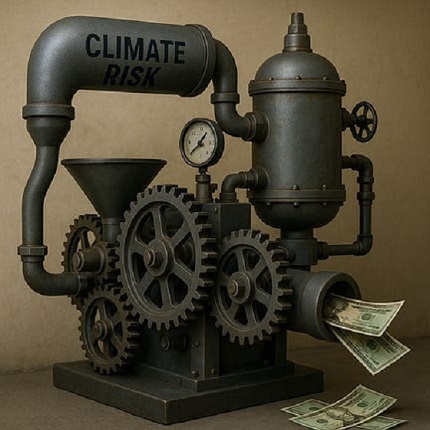
 Business2 days ago
Business2 days agoThe Climate-Risk Industrial Complex and the Manufactured Insurance Crisis
-

 Economy2 days ago
Economy2 days agoAffordable housing out of reach everywhere in Canada
-

 Health2 days ago
Health2 days agoThe Data That Doesn’t Exist
-
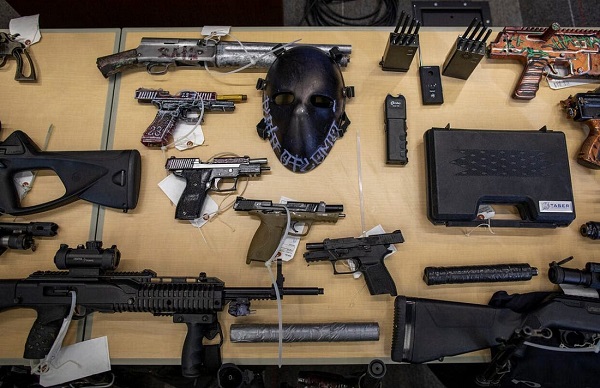
 Crime1 day ago
Crime1 day agoInside the Fortified Sinaloa-Linked Compound Canada Still Can’t Seize After 12 Years of Legal War
-

 Great Reset18 hours ago
Great Reset18 hours agoProposed ban on euthanasia for mental illness sparks passionate debate in Canada’s Parliament
-

 Automotive5 hours ago
Automotive5 hours agoThe $50 Billion Question: EVs Never Delivered What Ottawa Promised
-

 Business18 hours ago
Business18 hours agoConservative MP warns Liberals’ national AI plan could increase gov’t surveillance



